Last updated: March 5, 2020
Article
Red Pine Scale kills red pine trees at Acadia
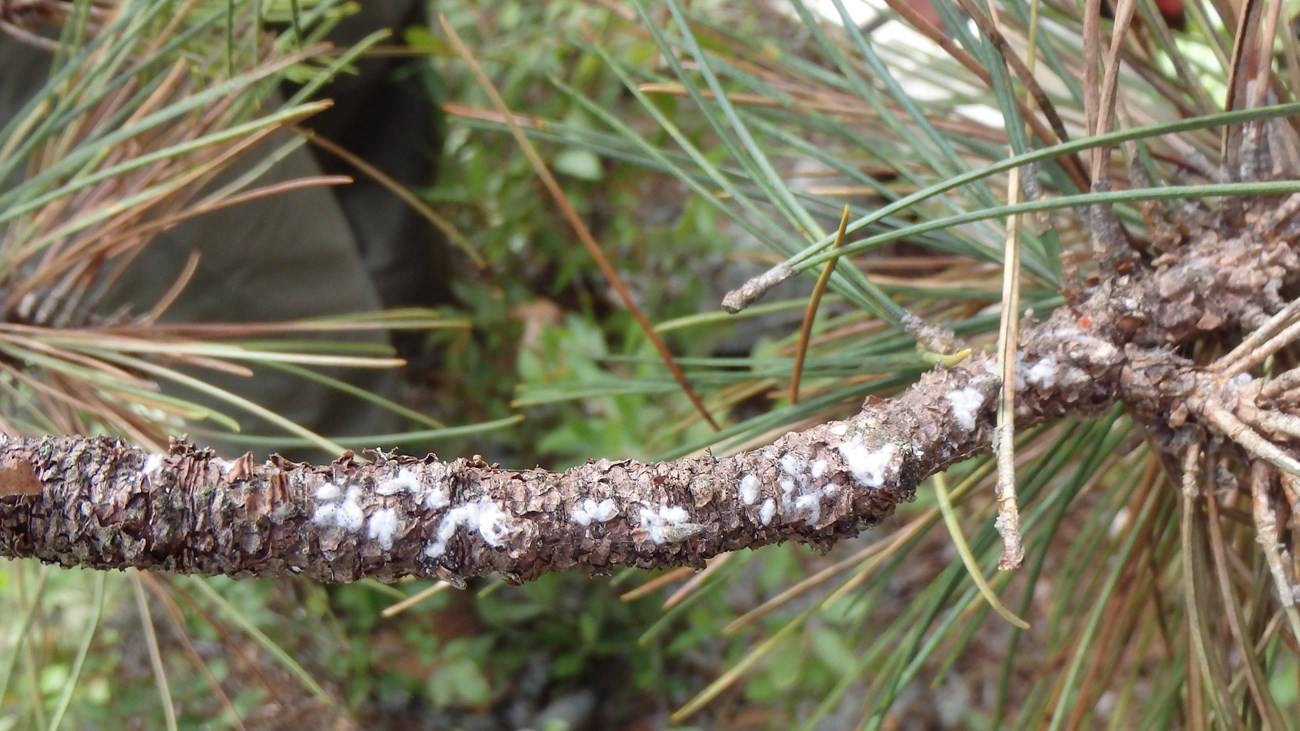
NPS photo by Jesse Wheeler
While red pine trees are a minor component of Acadia’s forests, they provide value for wildlife and are planted widely for both landscaping and forest products across New England. Red pine is found in patchy stands throughout the Mount Desert Island district of Acadia National Park, as well as on private property. Park staff and nearby residents have observed red pine declining in health in and around Acadia for more than a decade, but we only discovered the cause in 2014.
The invasive red pine scale (Matsucoccus matsumurae), also known as Japanese pine bast scale, was detected near Norumbega Mountain in the town of Mount Desert and Acadia National Park in September, 2014 . This was the first known occurrence in the State of Maine.
The red pine scale insect is native to Japan but arrived in the United States in 1946. The scale insect is about the size of a pin-head and covers itself with a protected white woolly substance that is visible on branches.
It is one of the most significant pests of native red pine. Large scale red pine die-off may increase work and associated costs to protect public safety and utilities because many dead trees will need to be removed when they become hazards. Luckily, it does not affect other pine species native to Maine.
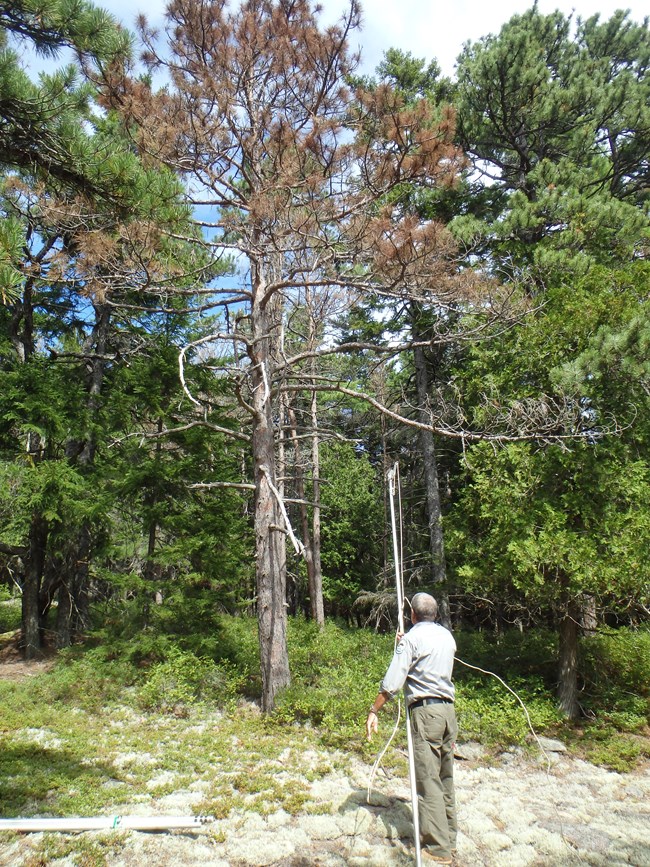
NPS photo by Jesse Wheeler
Red Pine Identification
•Tall straight trunk with lower branches falling off with age (self-pruning)
•Reddish-brown, plated bark
•Needles are 4-6” long; 2 per cluster, and break cleanly when doubled
•Cones are 2” long, egg-shaped, and without prickles
Resource managers inventoried red pine stands in 2015 and found that the scale was more widely distributed across MDI than originally thought; it had essentially spread all over the island. Now we see that most red pine are dead or dying from the red pine scale.
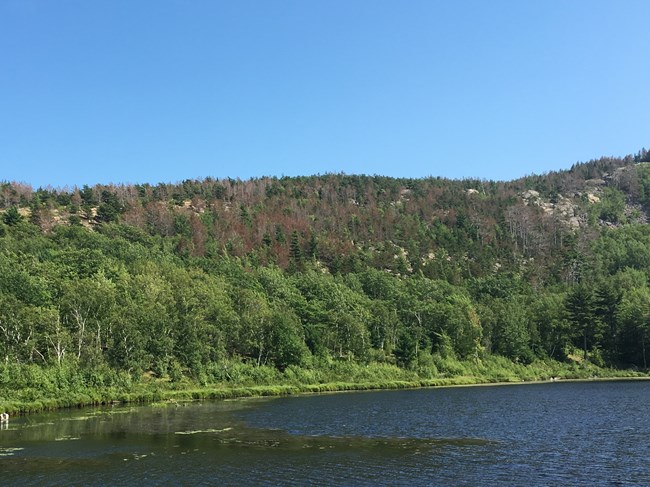
NPS Photo by Jesse Wheeler.
How is Acadia Managing the pest?: NPS managers at Acadia are removing dead pines that pose a hazard along roads, trails and parking lots. Ecologists recommend keeping standing dead pines that are not hazards to allow them to break down naturally. They provide good wildlife habitat and return nutrients to forest soils.
Desired public actions: Report unusual insects or plant die-offs to Acadia resource managers or Maine State entomologists—most reports of new invasive species come from concerned citizens. Don’t move landscaping materials or forest products, including firewood, long distances.
We recommend leaving dead snags unless they present a hazard to people and property. Long-term monitoring of red pine in Acadia will be used to document the spread of red pine scale as well as subsequent changes in forest composition as a result of widespread red pine mortality.
For more information contact: Jesse Wheeler, Vegetation Program Manager at Acadia National Park. 207.288.8722
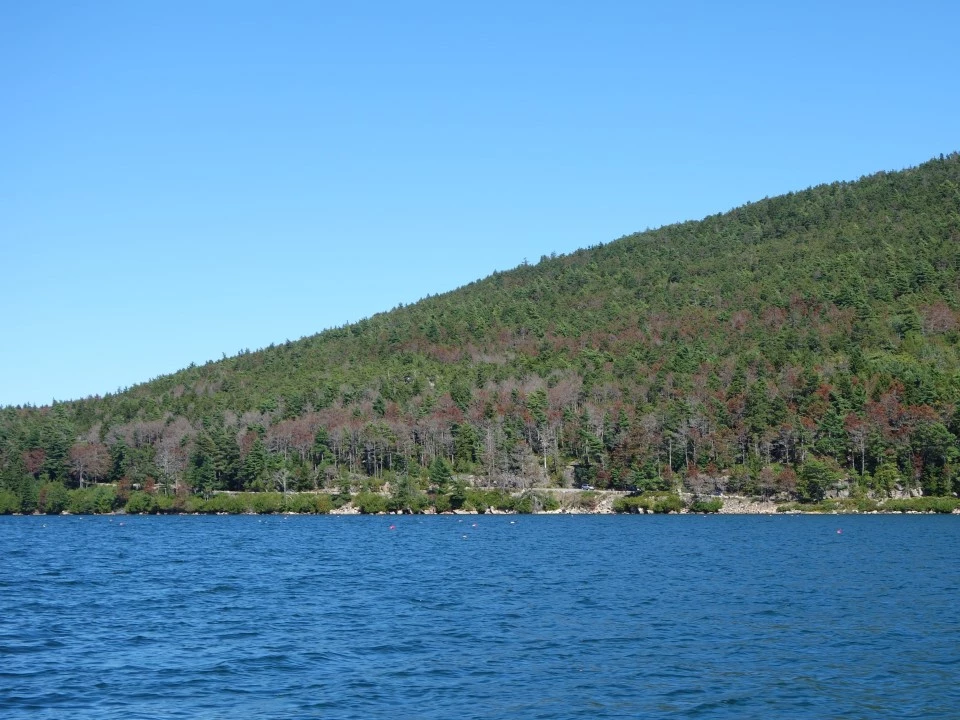
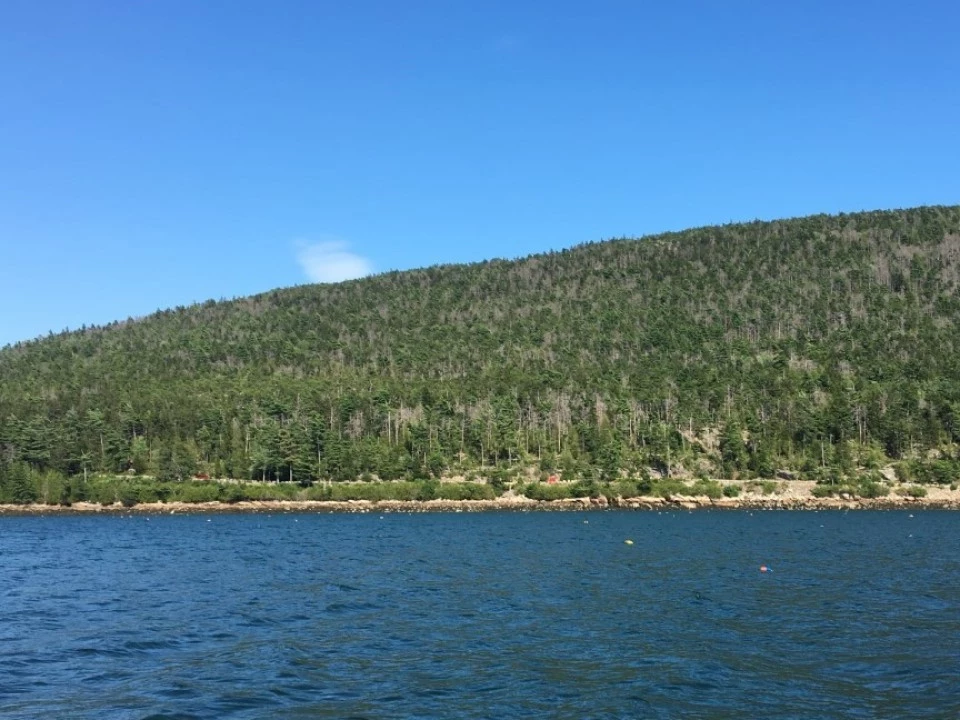
Left image
Red pine dying on Norumbega Mountain in 2014, seen from Somes Sound.
Credit: NPS photo by David Manski
Right image
Dead red pine on Norumbega Mountain in 2019 due to red pine scale, seen from Somes Sound.
Credit: NPS photo by Jesse Wheeler
